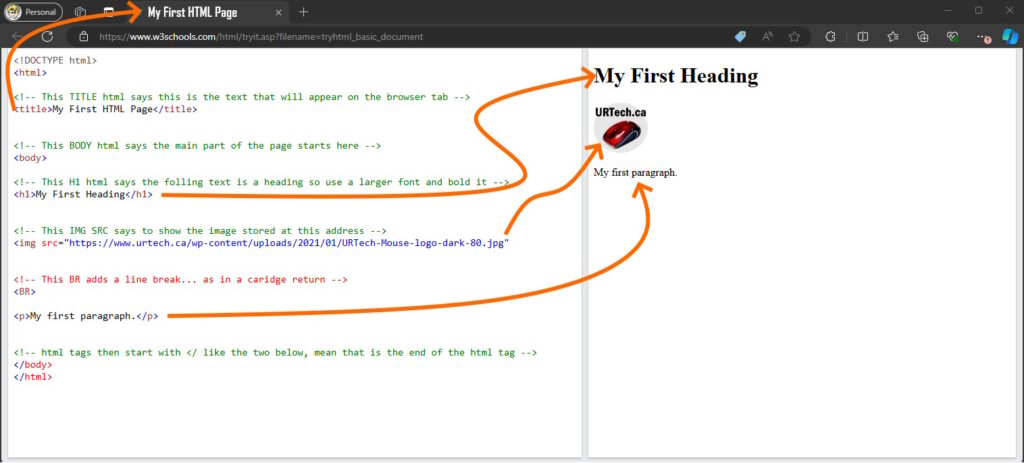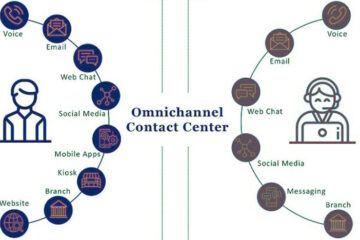Unless you’ve been living under a rock you likely have heard about HTML5, but most people really have no idea what it is or why it is better.
Lets start with the basics and move on.
WHAT IS HTML?
HTML, or HyperText Markup Language, is the simple (yes, simple… at least in the first 4 versions) coding language that is used to create web pages. It defines the structure and content of a web page using a series of elements and tags. These elements tell the browser how to display the content, such as headings, paragraphs, images, links, and more.
I first used HTML in 1996 when I created my first web page. It was for my employer and I had to explain what the Internet was and why the company would need a page in the coming years. I remember talking to someone who claimed to be a web developer and (at a time when no one was a web developer) about how to use Notepad (yes, the simple Windows text editor) to write and HTML web page.
Here is an example of a basic web page HTML that anyone can read and understand:

Key Features of HTML:
- Elements and Tags: HTML consists of elements defined by tags, such as
<h1>for headings,<p>for paragraphs, and<a>for links - Multimedia Support: HTML5 introduced native support for audio and video elements, allowing multimedia content to be embedded directly into web pages without the need for third-party plugins
- Semantic Elements: HTML5 also introduced new semantic elements like
<header>,<footer>,<article>, and<section>, which improve the structure and accessibility of web content
History of HTML
HTML was invented by Tim Berners-Lee in 1989 while he was working at CERN, the European Organization for Nuclear Research. He proposed an Internet-based hypertext system to enable researchers to share and link documents. The first version of HTML was formally published in 1993.
Evolution of HTML:
- HTML 1.0: Released in 1991, it was the first version of the language
- HTML 2.0: Defined by the HTML Working Group in 1995
- HTML 3.2: Became a W3C Recommendation in 1997
- HTML 4.01: Released in 1999, it was widely used throughout the 2000s
- HTML5: Introduced in 2008 and became a W3C Recommendation in 2014, bringing SIGNIFICANT improvements and new features
HTML5 vs. HTML4
HTML5 brings several improvements and new features compared to HTML4, making it a more powerful and flexible tool for web development. Here are some key differences:
1. Multimedia Support
- HTML4: Required third-party plugins like Flash or Silverlight for multimedia content
- HTML5: Introduced native support for audio and video through the
<audio>and<video>tags, eliminating the need for plugins
2. Offline Capabilities
- HTML4: No support for offline web applications
- HTML5: Introduced the Application Cache and local storage, allowing web applications to function offline and store data on the client-side. This fabulous new feature means that you can use Outlook Web App from Microsoft 365 without having outlook installed or even being connected to the Internet.
3. Semantic Elements
- HTML4: Lacked semantic elements, making it harder to structure content meaningfully.
- HTML5: Introduced new semantic elements like
<header>,<footer>,<article>, and<section>, improving the structure and accessibility of web content.
4. Graphics and Interactivity
- HTML4: Limited support for graphics and interactivity
- HTML5: Introduced the
<canvas>element and Scalable Vector Graphics (SVG), enabling dynamic, interactive graphics and animations directly in the browser
5. Form Controls
- HTML4: Basic form controls with limited functionality
- HTML5: Enhanced form controls with new input types (e.g., date, email, range) and attributes (e.g., placeholder, required), making form validation and user input easier
What’s New In HTML6
HTML6 is expected to bring even more exciting features and improvements. Here are some of the anticipated enhancements:
1. Custom Tags and Namespaces
- HTML6: Will allow developers to create custom tags and use namespaces, similar to XML, providing more flexibility in structuring content
2. Enhanced Multimedia Support
- HTML6: Expected to include better support for multimedia elements, including more advanced audio and video capabilities
3. Improved Graphics Control
- HTML6: May introduce CSS4 for more advanced graphics control, allowing for more sophisticated visual effects and animations
4. Cloud Storage and Peer-to-Peer Connectivity
- HTML6: Expected to support cloud storage options and peer-to-peer file transfer abilities, enhancing the functionality of web applications
5. Built-in Security Features
- HTML6: Anticipated to include built-in malware protection and other security features to make web applications safer
HTML5 has already revolutionized web development, and HTML6 promises to take it even further with more powerful and flexible features.
There is lots of work being done on HTML version 6 but it likely won’t be released and in general use until the end of the decade.



0 Comments